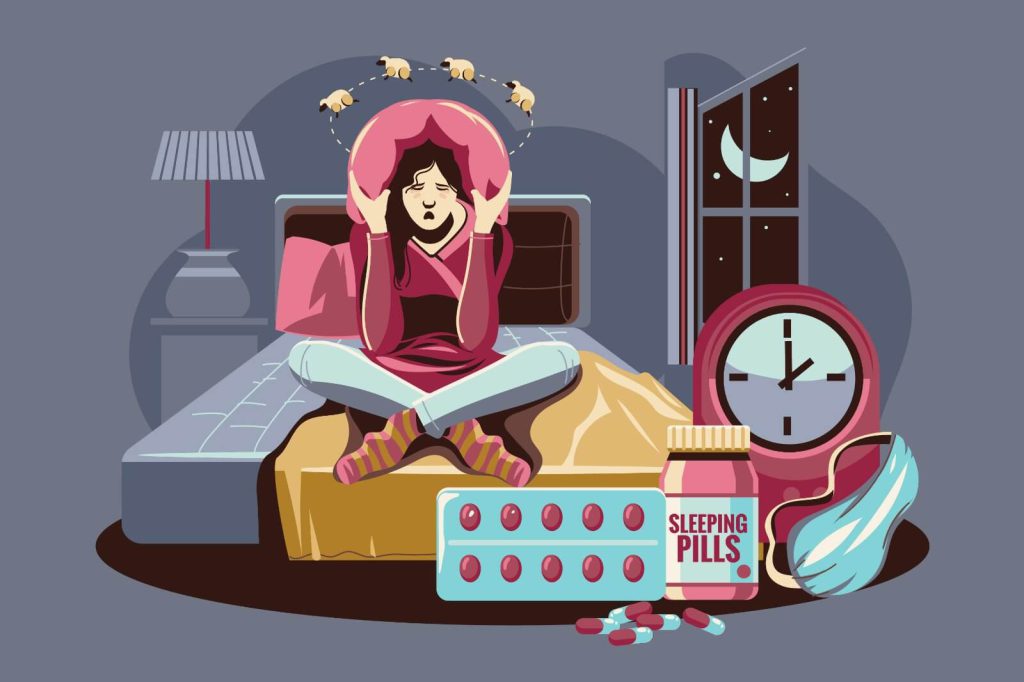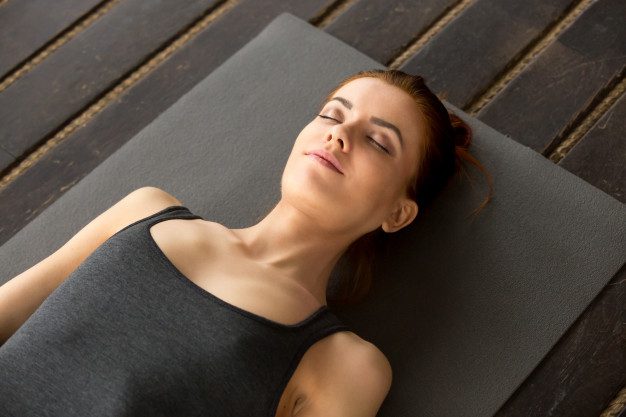Sleep disorders are conditions that affect the quality, duration, and timing of sleep, leading to difficulties in falling asleep, staying asleep, or having restful sleep.
It is said that a person should sleep like a dog. This means he should be attentive even in sleep. But, what if sleeping in a deep sleep becomes a daydream? Today’s busy or let’s say chaotic lifestyle has turned sleeplessness into a serious disease. Every other person meets by mentioning some kind of problem related to sleep.
Types of Sleep Disorders
There are various types of sleep disorders, each with its own set of symptoms and underlying causes. Here are some common sleep disorders:
Insomnia: Insomnia is the inability to fall asleep or stay asleep, leading to insufficient sleep. It can be caused by stress, anxiety, depression, certain medications, or underlying medical conditions.
Narcolepsy: Narcolepsy is a neurological disorder that causes excessive daytime sleepiness and sudden sleep attacks. People with narcolepsy may experience sudden and uncontrollable bouts of sleep during the day, as well as fragmented nighttime sleep.
Restless Legs Syndrome (RLS): RLS is characterized by an irresistible urge to move the legs, usually accompanied by uncomfortable sensations. These sensations worsen during periods of rest, making it difficult to fall asleep or stay asleep.

Circadian Rhythm Disorders: Circadian rhythm disorders are disruptions in the body’s internal clock, leading to difficulties in falling asleep or waking up at desired times. Examples include jet lag, shift work sleep disorder, and delayed sleep-wake phase disorder.
REM Sleep Behavior Disorder (RBD): RBD involves acting out vivid dreams during the REM (rapid eye movement) sleep stage. People with RBD may physically act out their dreams, which can result in injuries to themselves or their sleep partners.
Sleep-Related Movement Disorders: These disorders involve abnormal movements during sleep, such as periodic limb movements, sleep-related leg cramps, or sleep-related bruxism (teeth grinding).
There are many tips on why it is necessary to get enough sleep, but how it will come, there are a few ways. One of the most accurate remedies is Moon Breathing. Japanese people have been using this technique for a long time, but we Indians are familiar with it for more than that.
Sleep Disorders Treatment – Moon Breathing Technique
This technique is derived from Chandrabhedi Pranayama. In a book on kaizen techniques, author Sarah Harvey mentions that while living in Japan, she found a sense of calmness everywhere, even in crowded places like the Tokyo Metro station.
To understand all this, she started paying attention to many small things. There were many surprising and positive results that she has written in her book. During this research, she came to know about the Moon Breathing Technique and it played an important role in improving her sleep.

The Moon Breathing Technique is a relaxation and mindfulness practice that involves deep, rhythmic breathing. Here’s how to practice the Moon Breathing Technique:
- Find a Comfortable Seated Position: Sit in a comfortable position with your back straight and your shoulders relaxed. You can sit on a chair or on the floor with your legs crossed.
- Take a Few Deep Breaths: Close your eyes and take a few deep breaths in through your nose and out through your mouth. Let go of any tension or stress with each exhale.
- Visualize the Moon: Imagine a beautiful, serene full moon in your mind’s eye. Picture its soft, gentle light and the calmness it brings.
- Inhale Slowly: As you inhale through your nose, imagine that you are drawing in the moon’s calming energy. Visualize the moonlight entering your body, filling you with peace and tranquility. Inhale deeply, allowing your belly to expand.
- Exhale Slowly: As you exhale through your nose, imagine that you are releasing any tension, stress, or negative energy from your body. Picture it dissipating into the night sky, leaving you feeling lighter and more relaxed. Exhale fully, letting your belly gently contract.
- Repeat the Cycle: Continue inhaling and exhaling slowly, focusing on the visualization of drawing in the moon’s energy and releasing any tension or negativity. Find a natural rhythm that feels comfortable for you.
- Maintain Awareness of Your Breath: Stay present and focused on your breath as you continue the Moon Breathing Technique. If your mind starts to wander, gently bring your attention back to your breath and the visualization of the moon.
- Practice for a Few Minutes: Aim to practice the Moon Breathing Technique for a few minutes, or as long as it feels comfortable for you. You can gradually extend the duration as you become more comfortable with the practice.
This technique can be practiced at any time when you feel the need to relax, find inner calm, or connect with a sense of peace. It can be particularly helpful before bedtime to promote a sense of relaxation and prepare for a restful sleep.
Good Sleep
Good sleep refers to high-quality, restorative sleep that allows you to wake up feeling refreshed, energized, and mentally sharp. It involves going through different stages of sleep, including both non-rapid eye movement (NREM) sleep and rapid eye movement (REM) sleep, in a balanced and uninterrupted manner. Here are some characteristics of good sleep:
Sufficient Duration: Good sleep involves getting an adequate amount of sleep based on your individual needs. Most adults require between 7 to 9 hours of sleep per night, although the optimal duration can vary from person to person.
Efficient Sleep Latency: Sleep latency refers to the time it takes for you to fall asleep after getting into bed. In good sleep, sleep latency is relatively short, meaning you can fall asleep within a reasonable amount of time.
Uninterrupted Sleep: Good sleep is characterized by uninterrupted periods of sleep without frequent awakenings throughout the night. While it’s normal to wake up briefly during the night, frequent awakenings can disrupt the sleep cycle.
Balanced Sleep Stages: Sleep is composed of different stages, including NREM sleep and REM sleep. Good sleep involves cycling through these stages in a balanced manner. NREM sleep is divided into four stages, with the deepest stage (N3 or slow-wave sleep) being particularly restorative.

Restorative Effect: Good sleep leaves you feeling refreshed and rejuvenated upon waking up. It should provide sufficient rest and allow your body to recover from daily activities, promote physical and mental health, and support optimal cognitive functioning.
Absence of Sleep Disorders: Good sleep generally occurs without the presence of sleep disorders such as insomnia, sleep apnea, restless legs syndrome, or other conditions that can significantly impact sleep quality and quantity.
Consistency: Establishing a consistent sleep schedule and routine contributes to good sleep. Going to bed and waking up at the same time each day, even on weekends, helps regulate your body’s internal clock and promotes better sleep quality.
Feeling Alert and Energetic: A hallmark of good sleep is waking up feeling alert, well-rested, and ready to face the day. You should experience increased daytime alertness and mental clarity.
How to Get Good Sleep?
Getting good sleep is essential for your overall health and well-being. Here are several tips to help you achieve restful and rejuvenating sleep:
Stick to a Regular Sleep Schedule: At night try to sleep and wake up in the morning at the same time every day. Follow this schedule even on weekends. This helps regulate your body’s internal clock and establishes a sleep routine.
Create a Restful Sleep Environment: Make sure your bedroom is conducive to sleep. Keep the light off of the room, it should be dark, quiet, nice aroma and the temperature should be comfortable. Consider using earplugs, eye shades, or a white noise machine if necessary.
Create Bedtime Routine: Create a soothing pre-sleep ritual to prepare your body and mind for rest. Engage in activities like reading, enjoying a warm bath, or practicing relaxation techniques such as deep breathing or meditation, signaling to your body that it’s time to unwind and prepare for sleep.
Avoid Electronic Devices: Try to avoid using electronic devices like Smart Phone, TV, Tablets, Computer, and Laptops for at least an hour before bed. You can read books instead of using these devices.
Avoid Stimulants: Avoid consuming stimulants like caffeine and nicotine close to bedtime, as they can disrupt your sleep. Remember that caffeine can be found in coffee, tea, chocolate, and some medications.
Get Regular Exercise: Engaging in regular physical activity during the day can help you to improve your sleep quality.
Create a Comfortable Bedding Setup: Invest in a comfortable mattress, pillows, and bedding that suit your preferences and provide adequate support. Your sleep environment plays a significant role in how well you rest.
Stress Management: Stress can cause sleep disorders. Find healthy ways to manage stress, such as engaging in relaxation techniques, practicing mindfulness, or seeking support from a therapist or counselor.
Limit Daytime Napping: If you have trouble sleeping at night, avoid long or late daytime naps. Your nap duration should be short, it should be around 20-30 minutes only.
Avoid Heavy Meals and Fluid Intake: Eating a large meal or drinking a lot of fluids close to bedtime can cause discomfort, leading to disrupted sleep. Opt for a light snack if you’re hungry before bed.
Seek Medical Help if Needed: If you consistently struggle with sleep despite making lifestyle changes, consult a healthcare professional. They can assess any underlying sleep disorders or conditions that may be affecting your sleep.
Remember, it may take time to establish a new sleep routine and improve your sleep quality. Be patient and consistent with these tips, and you should gradually notice a positive difference in your sleep patterns.
Read more on The Power of Proper Breathing, Sleep Routine – What to Do Before Sleep? Kaizen Technique: Change for the Better, IKIGAI – A Reason to Jump Out of Bed Each Morning
Love,
Saurabh Goel
Saurabh Goel
He is the Founder and CEO of the Training and Counselling Company ‘Brain Soul & You’. He is an NLP Wellness Coach, Life Coach, Brain analyst, and Trainer for Education, Corporate, and Entrepreneurship. For more than 7 years, he delivered presentations on entrepreneurship, mind programming, and motivation. He did his B.tech in IT and later choose to be a successful psychologist. He is helping people in various ways through his counseling and training sessions.



1 thought on “Sleep Disorders – Treatment by Moon Breathing Technique”